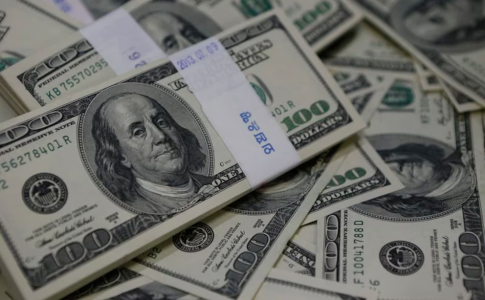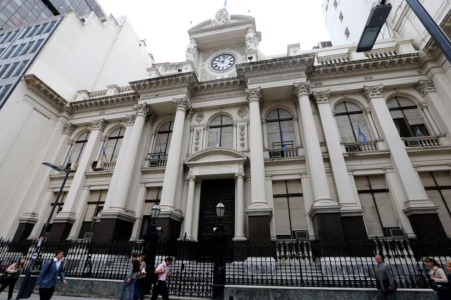All the Answers
Well-known member
The influx of dollars from money laundering is currently covering up doubts about the economy - Infobae

Source:

El ingreso de dólares por el blanqueo tapa por el momento las dudas sobre la economía
La expectativa oficial es que los inversores asuman riesgos y vayan a bonos y acciones
September 30, 2024
The official expectation is that investors will take risks and go into bonds and stocks.

By Luis Beldi

Money laundering is giving green light to economic policy REUTERS
The money laundering is today the main asset of economic policy, but it does not dispel doubts about the debt maturities, which are increasingly closer, in 2025. There are many who believe that a swap is inevitable. But that possibility is not in the plans of the Minister of Economy, Luis Caputo , who is negotiating a mega REPO and credits with multilateral organizations to cover the first part of the year and then, with the country risk at lower levels, take on debt in the international capital market.
On the other hand, the money laundering figures continue to surprise. On Wednesday, a record USD 1.719 billion was collected. In the last 10 days alone, USD 7.89 billion was laundered, which represents 78% of the USD 10.17 billion collected since the money laundering began. The total of private deposits in banks is USD 28.8 billion, of which the banks have USD 10.3 billion in cash.
Last week was a negative week for bonds and stocks, with caution in a heavy market. But the phenomenon cannot be related to the local mood, but rather to the international one, which faces the fall in economic activity in China and volatility in the United States.
October will mean another challenging month in terms of dollar purchases for the Central Bank, since Argentina will have to pay 150% of regular monthly imports (AdCap)
“Sovereign bonds continued to rise and surpassed the USD 45 ceiling for GD35,” noted a report by AdCap Grupo Financiero. “In our view, this surge of optimism comes from the acceleration of private sector deposits in USD, which is fueling growing confidence in the success of the Asset Regularization Regime that grew USD 3 billion faster than the pace of the Macri regime.” According to the report, “October will mean another challenging month in terms of dollar purchases for the Central Bank, as Argentina will have to pay 150% of regular monthly imports.” However, they warn that “the drop in Milei’s approval rating could bring another limit to the improvement of momentum .”
Recommendation
Adcap recommends investing in the Global 2035 “for which we expect a 14% rise until the end of the year, while we remain attentive to the Central Bank’s purchases. We believe that the Global 2035 will continue to rise comfortably above the USD 45 level with the extension of the Regularization and if the Central Bank does not lose reserves.” Later, it adds that “for a more cautious approach, we continue to favor the Global 2030 and the BOPREAL 2026, for which we expect a more favorable market even if the Government finds it difficult to accumulate reserves or if Milei’s approval rating deteriorates.” Finally, it points out that “since the bearish scenario implies significant volatility for the cash settlement (CCL), we continue to favor USD portfolios and consider including Shares for the aggressive portion instead of short-term bonds in pesos.”

In September, the BCRA was once again a net buyer of dollars REUTERS/Enrique Marcarian
After surveying 130,000 prices, the Equilibra consultancy estimated inflation for the fourth week of this month at 0.6% and monthly inflation at 3.5%.
Buyer balance
Andrés Reschini 's F2 consultancy highlights that the Central Bank "managed to cut sales in the Free Exchange Market (MLC) by closing the week with a purchase balance of USD 75 million to accumulate so far this month, just one round away from closing, a purchase balance of USD 256 million." In this way, he continues, "the gap between the cash settlement rate (CCL) and the official exchange rate was stationary all week around 27% and this is -10 percentage points from 37%, which coincides with the reduction of the PAIS tax (with the caveat that it did not cover the entire spectrum of application). It would be very important to break through this mark as a sign of confidence. Additionally, the BCRA reported that during August the interventions in the exchange gap were USD 153 million, a little less than half of the 326 million in July, which, on the other hand, was half a month since this policy was announced; "We would therefore be talking about a more genuine market than previously imagined, and this explains why the exchange rate has been more in line with the behaviour of the rest of the currencies in the region."According to F2, “the exchange rate is still on track to reach the level prior to the December jump by the end of the first quarter of 2025, even for the blend , so it will be key to quickly and steadily bring down inflation in order to avoid an exchange rate appreciation that begins to make a dent in the trade balance.” A positive fact from the report is that “the LECAPs closed with drops in yields, more pronounced in the shorter ones, and this is plausible given that it could indicate that the pesos that were left out of the bidding ($1 billion) went to look for instruments in pesos and did not generate tension in the exchange rate gap.”
Visions of the North
Morgan Stanley noted that “July’s GDP indicator surprised to the upside (1.7% year-over-year). However, we caution investors not to extrapolate this growth number into the future, as June had too many holidays (which were not fully captured by the models) and some preliminary data for August suggest some weakness.” The bank notes that “support appears to have been shaken in September, with confidence in the government falling. To the extent that activity recovers, we believe support will remain resilient.” According to the investment bank, Morgan Stanley forecasts that “currency unification could occur later this year, although the lifting of capital controls is likely to remain gradual.”Support appears to have been shaken in September, with confidence in the government falling. As activity recovers, we believe support will remain resilient (Morgan Stanley)
For its part, JP Morgan, the largest bank in the United States, prefers to “maintain a conservative approach. Thus, the sequential GDP growth for the third quarter will be cautiously revised to 4% (from 2.0% previously).” Regarding inflation, it forecasts that “in December 2025, inflation slowed to 18.3% with the exchange rate moving at the same magnitude (which implies 1.4% monthly). Meanwhile, GDP growth is estimated at 5% year-on-year, driven mainly by a strong rebound in demand. While we expect growth to rebound next year to 4.4% year-on-year (from -3.7% year-on-year in 2024), we consider this to be consistent with a higher inflation rate (33% as of December 2025).”
Investors can react a little more boldly today. Friday's close indicates that there is a greater willingness to take risks.

